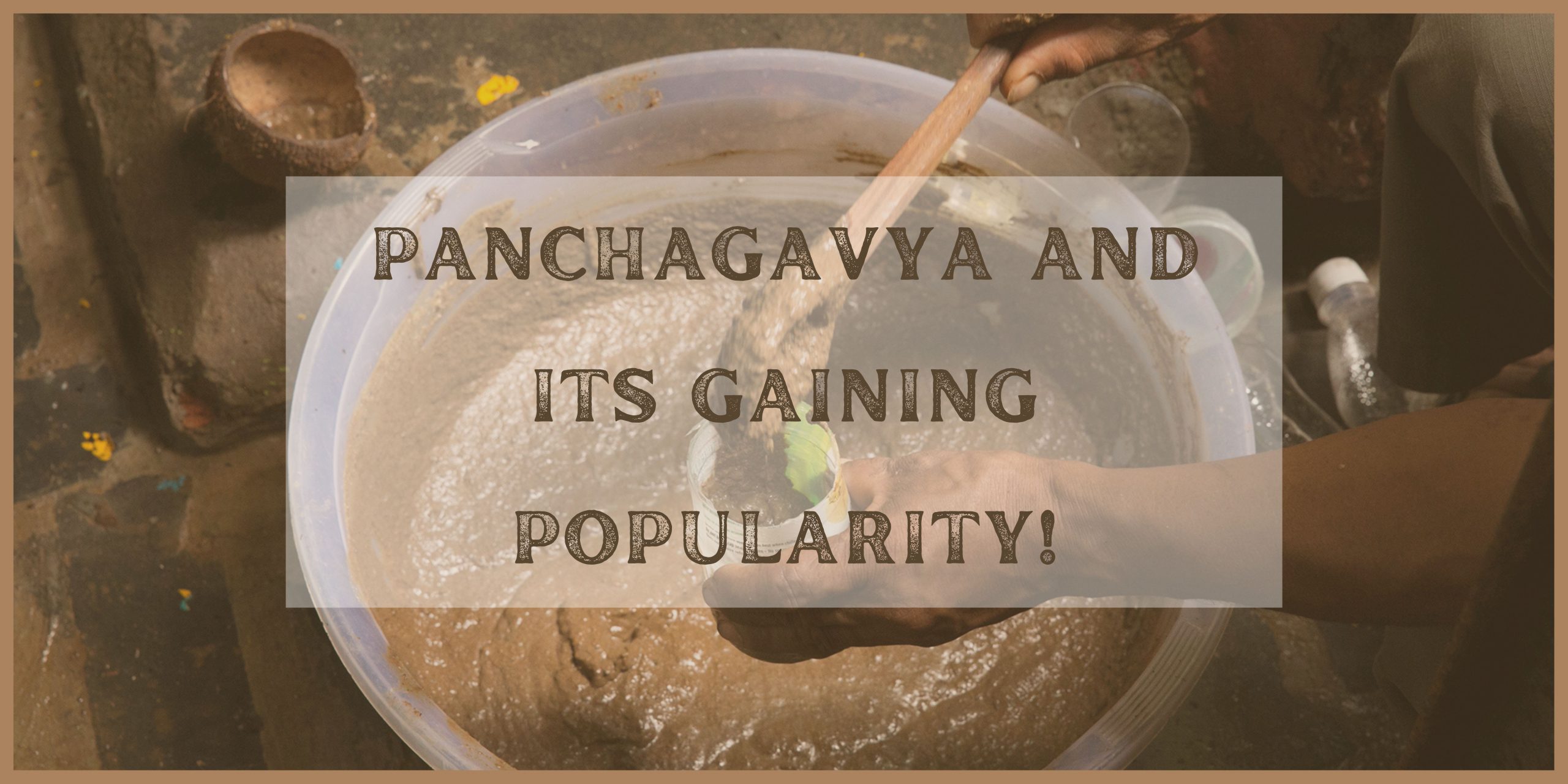
Panchagavya and its gaining Popularity!
The advantages of using Panchagavya are discussed in great depth besides describing the ways of preparation procedures. Panchagavya is a natural product that can be utilised as manure in agriculture. Desi cow ghee, Desi cow curd, Desi cow milk, Desi cow dung, and Desi cow urine are the major ingredients of Panchagavya and is utilised in organic farming since it helps plants grow and increase their immunity and it has many interesting benefits. Plants will indeed be able to fight pest infestations if their immunity increases. It encourages the growth of more branches on plants and causes profuse blooming with much more female flowers thus avoiding chemical fertilisers and its hazards. Auxins and Gibberellins, which control plant growth, are found in Panchagavya. In all crops, the harvest is 15 days ahead of schedule. Panchagavya is also high in vitamins and amino acids. It also comprises microorganisms useful to plants, such as phosphor bacteria, azotobacter, and pseudomonas. Vegetable yields can be boosted by up to 20% when Panchagavya is used.
There are nine components in Panchagavya that include water, milk, bananas, jaggery, cow dung, curd (yoghurt), tender coconuts, ghee (clarified butter), and cow urine. These can be awe-inspiring when combined and handled correctly. Below is the description of how to make Panchagavya. All nine materials can be mixed into a wide-mouthed mud pot, concrete tank, or plastic can. It is best to keep the container open in the shade. Stirring the mixture twice a day, in the morning and in the evening, is mandatory. After 30 days, the Panchagavya final concentration will be ready. It is important not to combine buffalo products. Local cow breeds’ products are more potent than foreign breeds. To deter houseflies from producing eggs and larvae from forming in the solution, keep it in the shade and cover it with a wire mesh or plastic mosquito net. Organic farmers utilise coconut water or sugarcane juice to boost or speed up the fermentation process. This also aids in the reduction of the mixture’s foul odour. The advantages of using Panchagavya include enhancing plant immunity and healing plants that have already been infected.
Panchagavya contains nearly all key nutrients, micronutrients, and hormones necessary for crop growth (IAA and GA). The photosynthetic system is turned on to boost biological efficiency and produce more metabolites and photosynthates. Plants sprayed with Panchagavya produce larger leaves and a denser canopy. It extends the shelf life of veggies, fruits, and cereals while also improving their flavour. Panchagavya is known for its high nutritional content. It contains macronutrients such as potassium, nitrogen, and, phosphorus which are essential for plant growth. It also contains micronutrients, which are extremely beneficial to plant growth and development. A thin oily layer forms on the stems and leaves, which reduces water evaporation. The plants’ deep and broad roots enable them to tolerate prolonged periods of drought. Both of the aforementioned elements are the advantages of Panchagavya that help to cut irrigation water usage by 30% while also ensuring drought resistance. Panchagavya could also be used to treat seeds, seedlings and store them, among other things. The advantages of using Panchagavya are abundant and dense rooting, with the roots expanding and spreading into deeper strata, allowing optimal nutrition and water absorption.
In the case of cucumber, the yield will be doubled. The skin of the vegetables grown with Panchagavya is usually lovely and shiny. The application of Panchagavya will help extend the shelf life of the vegetables. The vegetables will also be tasty. Panchagavya increases turmeric yield by 20%. It will have reduced drainage loss. Turmeric has long fingers if grown with Panchagavya. Arachnids or dragonflies won’t damage the crop, which may also prevent pesticide-related illnesses and is a suitable organic pest control method. Panchagavya turmeric is also expensive. It boosts turmeric’s curcumin content. After removing the male bud, a two percent Panchagavya solution is tied to the naval tip of the banana bunch. So, the bunches are of the same size and form. Banana harvest begins one month sooner than usual. These are the advantages of using Panchagavya, and it gives jasmine a wonderful scent and fragrance. No budworms were found throughout production or harvest. Using Panchagavya in a mango field encourages female flowering. It ensures fruitfulness, and the Mangoes will be fresh for 10 days at room temperature. Panchagavya mangoes have a superb flavour and aroma. Fruit grown with Panchagavya has a week-long shelf life. Year-round flowering is guaranteed with lime. The fruits will be aromatic, plump, and last 10-12 days. Panchagavya is a wonderful aid in succeeding in organic farming.